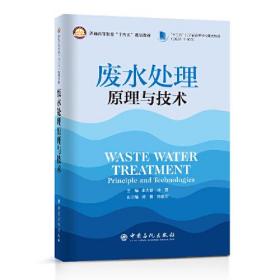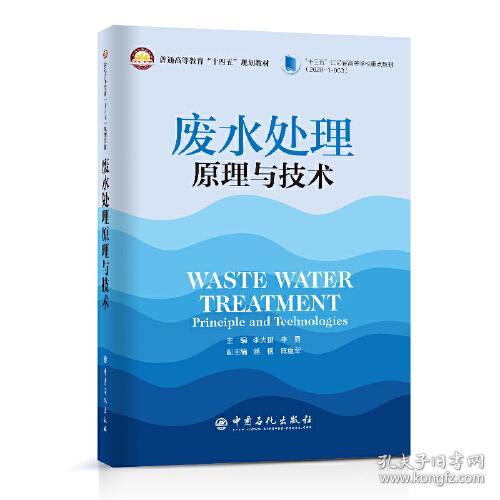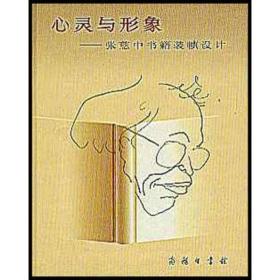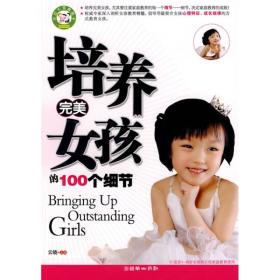
废水处理原理与技术
¥ 38 5.6折 ¥ 68 全新
仅1件
山东泰安
认证卖家担保交易快速发货售后保障
作者李大鹏 李勇 主编
出版社中国石化出版社有限公司
出版时间2022-04
版次1
装帧平装
货号R2库 11-25
上书时间2024-11-26
- 在售商品 暂无
- 平均发货时间 25小时
- 好评率 暂无
- 最新上架
商品详情
- 品相描述:全新
图书标准信息
- 作者 李大鹏 李勇 主编
- 出版社 中国石化出版社有限公司
- 出版时间 2022-04
- 版次 1
- ISBN 9787511465405
- 定价 68.00元
- 装帧 平装
- 开本 16开
- 纸张 胶版纸
- 页数 367页
- 字数 389.000千字
- 【内容简介】
- 本书系统介绍了各种水处理单元技术方法的基本原理、工艺流程、设计计算、管理及应用等。内容包括总论、筛滤与调节、混凝、沉淀与上浮、深层过滤、化学处理、吸附、离子交换、膜分离、其他相转移分离法、循环冷却水处理、废水生物处理理论基础、好氧活性污泥法、好氧生物膜法、厌氧生物处理、生物脱氮除磷、人工生态处理、污泥处理与处置、废水处理厂设计等。
- 【作者简介】
- 李大鹏,男,46岁,苏州科技大学/省协同创新中心管委会办公室主任/教授,高等教育给排水科学与工程专业评估委员会委员,专业方向:农村生活污水处理,地表水修复/访问学者1年,为国际留学生全英文授课4年。主持完成国家自然科学基金3项,主持完成省部级项目3项,参与完成国家自然科学基金重点项目1项和“十一五”水重大专项1项;目前主持国家自然科学基金1项、“十三五”水重大专项子课题2项、省高校重大项目1项。参编《湖泊沉积物界面过程与效应》,2013年,科学出版社,独立撰写第10章,4万字。迄今,公开发表文章102篇,其中SCI6篇(1区1篇,2区3篇),EI15篇,CSCD收录31篇。
- 【目录】
- Chapter 1 Overview of waste water ( 1 ) 1.1 What is waste water ( 1 ) 1.2 The types of the waste water ( 2 ) 1.2.1 Domestic waste water ( 2 ) 1.2.2 Industrial waste water ( 16 ) 1.2.3 Rural waste water ( 27 ) 1.3 The effects of the waste water ( 40 ) 1.3.1 Chemistry of water impurities ( 40 ) 1.3.2 Metallic corrosion ( 43 ) 1.3.3 Scale formation ( 47 ) 1.3.4 Fouling ( 48 ) 1.4 Waste water treatment processes ( 50 ) 1.4.1 Preliminary and primary treatment ( 50 ) 1.4.2 Secondary (biological) treatment ( 55 ) 1.4.3 Tertiary (advanced) treatment ( 65 )Chapter 2 Treatment theory of the activated sludge ( 75 ) 2.1 The traditional activated sludge ( 75 ) 2.1.1 The basic conception and the process ( 75 ) 2.1.2 The forms and component of the activated sludge ( 76 ) 2.1.3 The microorganism in the activated sludge and its function ( 77 ) 2.1.4 The clarification process by the activated sludge ( 78 ) 2.1.5 The effect of the environmental factors on the activated sludge ( 80 ) 2.2 Some performance indexes of the activated sludge ( 85 ) 2.2.1 Some performance indexes of the activated sludge ( 85 ) 2.2.2 Some indexes of the activated sludge for designment and running ( 89 ) 2.2.3 Aeration ( 92 ) 2.3 The development and application of the activated sludge ( 95 ) 2.3.1 Complete-mix activated sludge process ( 95 )2.3.2 Tapered aeration process ( 96 )2.3.3 Contact-stabilization activated sludge ( 97 ) 2.3.4 High-purity oxygen activated sludge ( 98 ) 2.3.5 Step-feed activated sludge ( 99 ) 2.3.6 Extended aeration activated sludge (100) 2.3.7 High-rate activated sludge (100) 2.3.8 Selector activated sludge (101) 2.3.9 The running parameters for the traditional activated sludge andmodified processes (102) 2.4 The cultivation and running management of the activated sludge (103) 2.4.1 The cultivation of the activated sludge (103) 2.4.2 The running of the activated sludge (103) 2.5 The abnormal phenomenon during the running of the activated sludge (105) 2.5.1 Sludge bulking (105) 2.5.2 Sludge disintegration (107) 2.5.3 Sludge corruption (108) 2.5.4 Sludge floating (108) 2.5.5 Bubbles (108) 2.5.6 Abnormal biofacies (109) 2.5.7 Insufficient nitrification (109) 2.5.8 Insufficient denitrification (110) 2.6 The designment of the activated sludge (110) 2.6.1 Aeration tank (110) 2.6.2 The secondary settling tank (111) 2.6.3 The design on the backflow of the sludge (112)Chapter 3 The biofilm (115) 3.1 The basic concepts (116) 3.1.1 The formation of the biofilm and the clarification (116) 3.1.2 The carrier of the biofilm (118) 3.1.3 The characteristics of the biofilm (119) 3.1.4 The biofilm reactor (121) 3.2 Some important parameters (121) 3.2.1 Specific increase rate of biomass (122) 3.2.2 Specific removal rate of the substrate (122) 3.3 Bio-filters (123)3.3.1 The definition of the bio-filter (123 ) 3.3.2 Trickling filter (125) 3.3.3 High-rate filter (127) 3.3.4 Tower biofilter (131) 3.3.5 Biological aerated filter (133) 3.4 Rotating biological contactor (136) 3.4.1 The overview (136) 3.4.2 The principle and the application (136) 3.4.3 The designment of the rotating biological contactor (139) 3.5 Submerged biofilm reactor (140) 3.5.1 The structure (141) 3.5.2 The form of the aeration tank (142) 3.5.3 The characteristics of the submerged biofilm reactor (144) 3.5.4 The processes of the submerged biofilm reactor (144) 3.5.5 The designment of the submerged biofilm reactor (146) 3.6 Biological fluidized bed (147) 3.6.1 The structure (147) 3.6.2 The characteristics u56256 ._xddba_ (148) 3.6.3 The process type of the biological fluidized bed (149) 3.6.4 The designment of the biological fluidized bed (151) 3.7 The new biofilm reactor and combination process (152) 3.7.1 Combined biofilm reactor (152) 3.7.2 Union process of biofilm and activated sludge (153)Chapter 4 Typical treatment processes on domestic and industrywaste water (156) 4.1 For domestic waste water (156) 4.1.1 Oxidation ditch (156) 4.1.2 Sequencing batch reactor (171) 4.1.3 Membrane bioreactor (183) 4.1.4 Adsorption biodegradation (AB) (186) 4.1.5 Moving bed biofilm reactor (188) 4.1.6 A/ O process (190) 4.2 For Industrial waste water (206) 4.2.1 Anaerobic biological treatment (207)4.2.2 Upflow anaerobic sludge blanket reactor (216 ) 4.2.3 The other typical technologies (218)Chapter 5 Typical technology on rural waste water (227) 5.1 Production and collection of rural domestic waste water (227) 5.1.1 Production of rural domestic waste water (227) 5.1.2 Collection of rural domestic waste water (228) 5.1.3 Water quality characteristics of rural domestic waste water (230) 5.2 Typical technologies (231) 5.2.1 Oxidation lagoon (231) 5.2.2 The wetlands (241) 5.3 Commonly used integrated treatment device for rural domesticsewage treatment (246) 5.3.1 Vertical flow type AAO integrated device (246) 5.3.2 Integrated air lift SBR device (247) 5.3.3 Integrated biological filter (249) 5.3.4 Integrated MBR device (250) 5.4 Long-term operation and management mechanism of rural waste watertreatment technology (251)5.4.1 Territory (village and town) self-operation and maintenancemanagement mechanism (251) 5.4.2 Third-party operation management mechanism (251) 5.4.3 Construction and operation integrated operation managementmechanism (252)Chapter 6 Control and use on sludge (254) 6.1 Overview (254) 6.1.1 The principle for the sludge treatment (254) 6.1.2 The basic method for the sludge treatment (255) 6.1.3 The basic process for the sludge treatment (256) 6.2 Sludge characteristics and calculation (256) 6.2.1 The component and the types of the sludge (256) 6.2.2 The indexes of the sludge (257) 6.2.3 The calculation on the sludge amount (260) 6.3 Sludge thickening (261) 6.3.1 The gravity thickening (262)6.3.2 The flotation thickening (263 ) 6.4 Sludge digestion (264) 6.4.1 Anaerobic digestion (264) 6.4.2 Aerobic digestion (265) 6.5 Sludge conditioning (265) 6.5.1 Chemical conditioning (266) 6.5.2 Heat conditioning (266) 6.5.3 Elutriation conditioning (266) 6.5.4 Freezing solution conditioning (267) 6.6 Sludge dewatering (267) 6.6.1 The natural drying of sludge (267) 6.6.2 The mechanical dewatering of sludge (267) 6.7 Sludge drying and incineration (270) 6.8 Comprehensive utilization and ultimate disposal of the sludge (270) 6.8.1 Agricultural fertilizer (270) 6.8.2 Building materials (271) 6.8.3 Landfill (271) 6.8.4 Land use (271) 6.8.5 Compost (272) 6.8.6 Thermolysis (273)Chapter 7 Waste water treatment cases (275) 7.1 Traditional activated sludge (276) 7.2 Anaerobic-aerobic activated sludge process (277) 7.2.1 Anaerobic-aerobic activated sludge process for removal P (277) 7.2.2 Anaerobic/ anoxic/ aerobic process (278) 7.3 Adsorption/ biodegradation process (278) 7.4 Oxidation ditch process (280) 7.4.1 A-E oxidation ditch (280) 7.4.2 T oxidation ditch (282) 7.5 Biological aerated filter (284) 7.6 A domestic example of reconstruction and extension of sewage plant (285) 7.6.1 Introduction (285) 7.6.2 Renovation and extension scheme of sewage plant (289) 7.6.3 Operation effect (319)Chapter 8 Water reclamation and reuse (320 ) 8.1 Water reclamation (321) 8.2 Current and potential future global water shortages (324) 8.2.1 Irrigation water use (324) 8.2.2 Domestic and industrial water uses (325) 8.3 The important role of the water reclamation and reuse (325) 8.4 Technology development (330) 8.4.1 Typical water reclamation processes (332) 8.4.2 Complete flow scheme optimizing for water reuse (334) 8.5 Framework for water reuse implementation (338) 8.6 Cases (339) 8.6.1 Water reuse in China (339) 8.6.2 The others (350)Chapter 9 Waste water recovery (358) 9.1 What is waste water recovery (358) 9.1.1 Pollutant recovery (358) 9.1.2 Water reuse (359) 9.2 Recovery and energy in municipal waste water (360) 9.2.1 Recovery types and feasibility (360) 9.2.2 Energy reserves and energy feasibility (361) 9.3 Phosphorus recovery (362) 9.3.1 Significance of phosphorus recovery (362) 9.3.2 Basic methods for phosphorus resource (363) 9.3.3 Evaluation on phosphorus resource (366)
点击展开
点击收起
— 没有更多了 —












以下为对购买帮助不大的评价